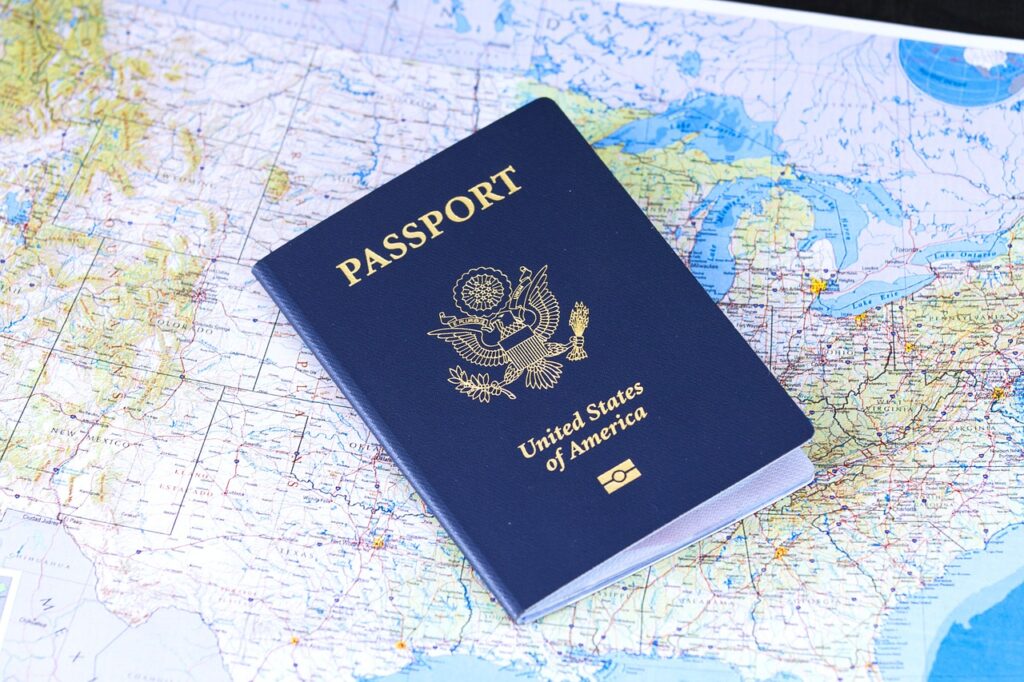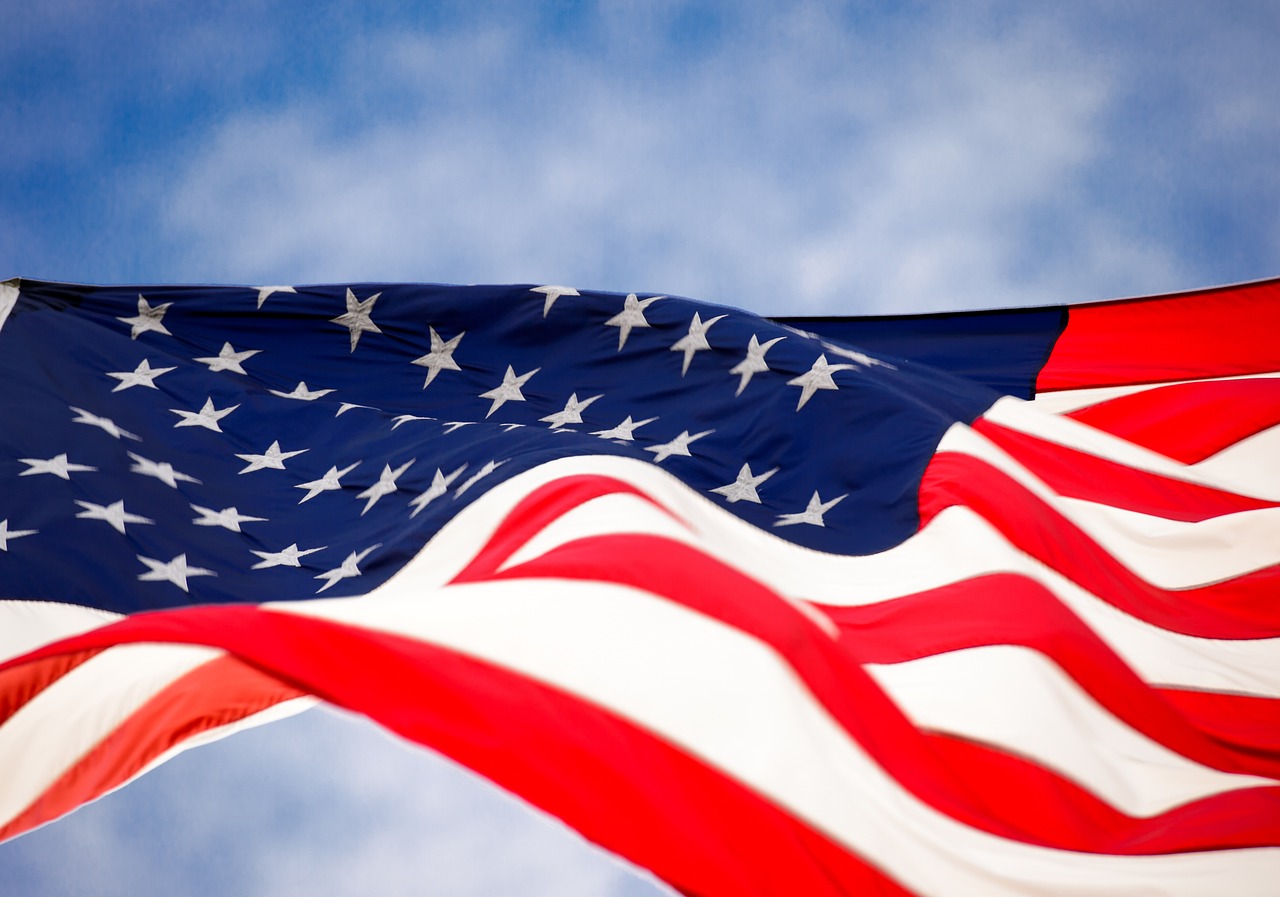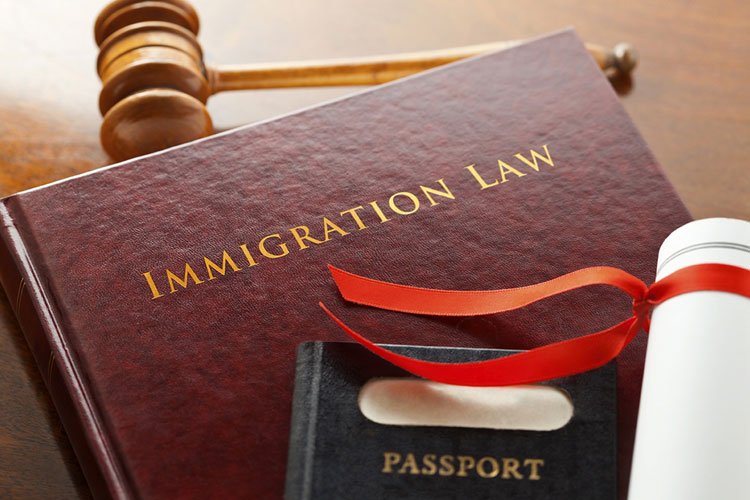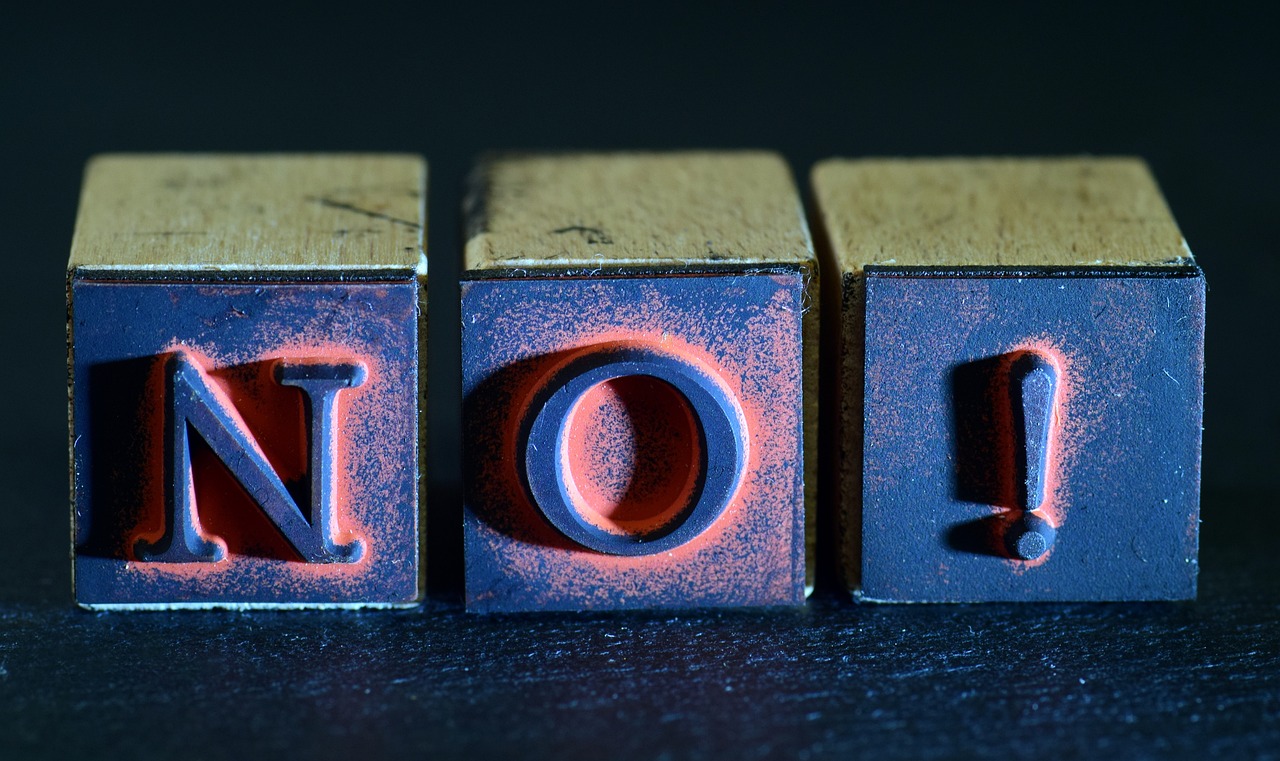In the realm of immigration law, few topics generate as much confusion and misinformation as the O-1 visa. From the misconception of celebrity status being a prerequisite to the perceived complexity of the application procedure, we delve into the key aspects of the O-1 application journey. Our goal is to empower prospective applicants with accurate information and practical advice, ensuring they navigate the immigration process with confidence and clarity.
Please remember that this article does not provide any legal advice. If you would like to discuss your immigration situation, please speak with the immigration attorney. If you would like to speak with our lawyer, please contact us here.
Introduction to the O-1 Visa and its Key Requirements
The O-1 Visa is a temporary U.S. work visa tailored for individuals showcasing extraordinary abilities across various fields, including arts, sports, business, education, or sciences. According to the U.S. Citizenship and Immigration Services (USCIS), it enables employment in the U.S. with a specific employer for up to three years, extendable in one-year increments.
Eligibility for the O-1 Visa
It serves as a gateway for startup founders, researchers, engineers, artists, and other professionals to access the vast opportunities within the U.S. economy. Straying from industry-specific requirements or mandatory degrees, it welcomes individuals with proven track records, irrespective of celebrity status or accolades like Nobel Prizes.
Employment Requirement
As an employment-based visa, the O-1 Visa necessitates sponsorship by an employer or agent. While self-petitioning for the O-1 Visa isn’t feasible, U.S. companies can file the petition for the beneficiary so long as the beneficiary does not have a controlling interest in the company. Entrepreneurs may only have a minority stake in their company and must have an employee-employer relationship with the petitioning entity. The entity must maintain the right to hire, fire, and pay the beneficiary for a valid employee-employer relationship to exist. In case you own the majority stake in the company, this needs to be discussed with the attorney and evaluated if employee-employer relationship can be proven.
Distinguishing O-1A and O-1B Criteria:
The O-1A visa is designed for individuals with extraordinary ability in the sciences, education, business, or athletics, while the O-1B visa is for those with extraordinary ability in the arts or extraordinary achievement in the motion picture or television industry.
O-1A Visa Criteria:
- Requires extraordinary ability in the sciences, education, business, or athletics.
- Demonstrates a high level of expertise and distinction in their field through sustained national or international acclaim.
- Requires evidence of receipt of major awards or prizes, or other recognition for outstanding achievements.
O-1B Visa Criteria:
- Requires extraordinary ability in the arts or extraordinary achievement in the motion picture or television industry.
- Demonstrates a high level of skill and recognition in their field through a record of major commercial or critically acclaimed successes.
- Requires evidence of substantial recognition and achievements, such as significant roles in distinguished productions or critical acclaim from experts in the field.
Demonstrating “Extraordinary Ability”
The cornerstone of the application is demonstrating extraordinary ability in your field. For the O-1A Visa this can be showcased through the receipt of a major internationally recognized award, such as the Nobel Prize or other high-caliber award, or satisfying at least three of the following criteria:
- Receipt of lesser nationally and internationally recognized prizes or awards for excellence in the field of endeavor;
- Membership in associations in the field which require outstanding achievements of its members, as judged by experts in the field;
- Published materials about the individual in professional or major trade publications, or appearance/published materials about the individual in other major media;
- Participation, either individually or as part of a panel, as a judge of the work of others in the field (including having served as a reviewer/referee for articles to be published, on discussion and advisory panels, etc.);
- Original scientific, scholarly, artistic, athletic or business-related contributions of major significance in the field;
- Authorship of scholarly articles in the field, as published in professional or major trade publications or in other major media;
- Serving in a critical or essential capacity for organizations or establishments that have a distinguished reputation; and/or
- Commanding a high salary or other significantly high remuneration for services, as compared to others in the field; and/or
- Comparable evidence where the listed criteria are not readily applicable to the beneficiary’s occupation.
The O-1B visa eligibility requires “distinction” in the arts. This can be demonstrated by winning major accolades such as an Academy Award or an Emmy, or by meeting at least three of the following criteria:
- Leading or performing in prominent shows or events.
- Holding key positions in prestigious organizations.
- Obtaining national or worldwide recognition.
- Having commercial or critically recognized success.
- Experts are giving it high marks.
- Earning a high salary or substantial compensation.
- Providing comparable evidence when criteria are not directly applicable.
Timelines for Obtaining an O-1 Visa
The timeline to prepare an initial O-1 petition averages 8-12 weeks, with USCIS processing typically taking 2-3 months once filed. It is possible to request expedited processing of the O-1 petition for an additional fee via premium processing, which shortens the timeline to 15 business days. Once the O-1 petition is approved by USCIS, applicants will need to schedule and attend an O-1 visa interview at their closest U.S. Consulate or Embassy to receive the visa in their passport.
This comprehensive overview lays the groundwork for delving deeper into the O-1 Visa application procedure, requirements, and benefits, equipping individuals with the knowledge necessary to pursue their professional aspirations in the United States.

Debunking Common Myths
As with any complex procedure, the application is often surrounded by myths and misconceptions that can deter potential applicants or lead to misunderstanding. By debunking these common myths surrounding the process, we aim to provide clarity and reassurance to potential applicants. With a solid understanding of the O-1 criteria and following proper guidance, individuals can confidently pursue their professional goals in the United States through the O-1 visa program.
| Myth | Common Misconception |
| Celebrity Status is Required | Contrary to popular belief, the O-1 visa is not exclusively for celebrities. It is open to individuals who demonstrate extraordinary ability (O-1A), or “distinction” for those in the arts (O-1B) through various achievements such as awards, publications, memberships, or significant contributions. |
| Complexity of the Application | While the O-1 visa application procedure requires thorough documentation, it is not as challenging as applicants may believe. With proper guidance and preparation, applicants can successfully navigate the process. Working with experienced legal counsel can streamline the application procedure and ensure all requirements are met effectively. |
| Low Approval Rates | There is a misconception that the O-1 visa has low approval rates. In reality, applicants who meet eligibility criteria and provide strong supporting evidence have a greater likelihood of being approved. By highlighting achievements and working with legal counsel, applicants can increase their chances of success. |
Benefits of the O-1 Visa
Flexibility:
As an O-1A visa holder, you may be eligible to work for multiple employers simultaneously, however each employer must file a separate petition on your behalf. Additionally, each job opportunity must meet the criteria of the O1A visa classification and receive approval from USCIS.
Additionally, the O-1B classification allows certain individuals to work for multiple employers in the United States, where the beneficiary is being represented by a U.S. agent. This flexibility is particularly advantageous for professionals such as freelancers, entertainers, or performers who have multiple performances or engagements, offering them the freedom to pursue diverse career paths and opportunities.
Long-Term Stay:
With an initial validity period of up to three years and the option to extend in increments of up to one year, for the duration needed to accomplish the event or activity, the O-1 Visa offers stability and long-term career growth in the United States.
Family Accompaniment:
O-1 Visa holders can bring their spouses and unmarried children under the age of 21 to the United States on O-3 visas. While O-3 visa holders cannot work in the United States, they can attend school or college, providing educational opportunities for family members and allowing families to stay together during the visa holder’s employment in the U.S.
Path to Permanent Residency:
While the O-1 Visa itself is a nonimmigrant visa, it can serve as a stepping stone to permanent residency (Green Card) in the United States. Individuals with extraordinary abilities may be eligible to apply for EB-1A Green Cards, which offer a direct path to permanent residency without the need for employer sponsorship or labor certification. This provides an opportunity for long-term settlement and continued professional growth in the United States.
Entrepreneurial Opportunities:
The O-1A Visa Classification allows individuals to establish their own businesses or pursue entrepreneurial ventures in the United States, contributing to innovation and economic growth. This is particularly advantageous for startup founders, innovators, and entrepreneurs looking to launch or expand their ventures in the U.S. market. This exposure enhances professional development and opens doors to new opportunities for career advancement and collaboration.
Access to Leading Industries:
O-1 Visa holders have the opportunity to collaborate with top-tier companies and professionals in leading industries, gaining exposure to cutting-edge technologies and methodologies.
Cultural Exchange:
By attracting talented individuals from diverse backgrounds, it promotes cultural exchange and fosters cross-cultural understanding, enriching communities and contributing to societal development. O-1 Visa holders bring unique perspectives, experiences, and expertise to their respective industries, fostering innovation, creativity, and knowledge sharing.
Overall, the O-1 Visa has the potential to provide long-term opportunities for individuals with extraordinary abilities in pursuit of their professional aspirations in the United States, while also providing a range of opportunities for career growth, personal development, and cultural exchange.
Step-by-Step Guide to the Application Process
| 1. Determine Eligibility | Determine if you meet the criteria, according to your field of expertise, showcasing extraordinary ability (O-1A) or ‘distinction’ (O-1B). |
| 2. Secure Sponsorship | Obtain a petitioner: you must have a U.S. employer or agent willing to sponsor your application. The sponsor will file Form I-129, Petition for Nonimmigrant Worker, on your behalf. |
| 3. Compile Documentation | Gather evidence to support your extraordinary ability or level of distinction, including awards, publications, memberships, testimonial letters, etc.Contact immigration attorney, if possible, who will evaluate your achievements and help you create a strong O-1 application. |
| 4. Consultation Requirement | Where applicable, obtain validation from a U.S. peer group or labor organization in your field written in support of the O-1 Visa application. |
| 5. Submit Petition | Your sponsor submits Form I-129 and supporting documents to USCIS. |
| 6. Issuance of Receipt Notice | It acknowledges the acceptance and processing of an immigration application or petition by USCIS. |
| 6. Wait for Approval | Await USCIS review, which typically takes several months; consider premium processing for faster results. |
| 7. Attend Biometrics Appointment (if required) | If USCIS requests biometrics, such as fingerprints and a photograph, attend the scheduled appointment at a USCIS Application Support Center. |
| 8. Receive Decision | Receive USCIS’s decision; if approved, you’ll receive Form I-797 indicating approval. |
| 9. Schedule the O-1 Visa Interview and Enter the U.S. | Once your O-1 petition has been approved by USCIS, you must schedule and attend the O-1 Visa interview at a U.S. Embassy or Consulate abroad for visa issuance. Thereafter, you may travel to the U.S. with your approved visa; and present it to CBP at the port of entry. Unless you decided to apply for a change of status. Change of status or consular processing should be discussed with the attorney to make sure that you follow all the regulations. |
| 10. Status Maintenance | Adhere to visa regulations; work only for your sponsoring employer and comply with terms. |
Overcoming Common Application Challenges
The application procedure can be daunting due to various challenges. Here’s how to tackle common obstacles:
- Documentary Evidence: Gather comprehensive evidence of extraordinary ability or ‘distinction,’ such as awards, publications, memberships, etc. with the help of experienced immigration attorneys.
- Consultation Requirement: Plan ahead and identify suitable organizations for the required peer group consultation in support of the O-1 Visa application.
- Premium Processing Consideration: Evaluate the benefits of paying for expedited processing against the additional cost and budget accordingly.
- Biometrics Appointment Logistics: Plan travel and schedule appointments in advance, ensuring all necessary documentation is prepared.
- Prepare for Interview (if applicable): If an interview is required, prepare thoroughly by reviewing commonly asked questions, practicing responses, and gathering additional documentation to support your application.
- Language and Cultural Barriers: Seek assistance from bilingual or culturally competent professionals to overcome communication obstacles.
By addressing these obstacles proactively and seeking appropriate guidance from an immigration attorney, applicants can enhance their chances of a successful application.
Conclusion
Unlocking opportunities in the U.S. with the O-1 Visa is within reach for individuals at the top of their field of expertise (O-1A) or those possessing ‘distinction’ in the arts (O-1B). Despite challenges, meticulous planning and guidance from immigration attorneys paves the way for success.
By understanding requirements, dispelling myths, and navigating the procedure step-by-step, applicants can confidently pursue their American dreams. With determination and support, this procedure offers a pathway toward long-term career opportunities and contributing to the world’s leading economy.
If you are interested in determining your eligibility for the O-1 Visa kindly complete this free brief screening, and our team of attorneys will carefully review your accomplishments.
FAQ’s
Is there a limit to the number of O-1 Visas issued each year?
There is no statutory limit to the number of O-1 Visas that can be issued each year as with other visa types. As long as applicants meet the eligibility criteria and provide sufficient evidence of their extraordinary ability, they can apply at any time throughout the year.How long does it take to get an O-1 Visa?
The preparation of a typical initial O-1 petition averages 8-12 weeks. Once the O-1 petition has been filed, USCIS processing usually takes 2-3 months. Applicants can also opt to pay an additional fee for premium processing, which reduces the processing time to 15 business days. It is important to check the waiting times at the US embassy for the visa interview availability, unless you plan to apply for the change of status in the US.Can I apply for the O-1 Visa on my own, or do I need an employer to sponsor me?
The fact is that the O-1 procedure is an employment-based visa, so you will need a U.S. employer or agent to sponsor your application. Self-petitioning is not possible for this application. However, a U.S. company can petition for a beneficiary that possesses a minority stake in the U.S. company, as long as another party maintains the controlling interest, and has the right to hire, fire, and pay the beneficiary (employee-employer relationship).









